Don't wanna be here? Send us removal request.
Text
Stretching for Specific Audiences
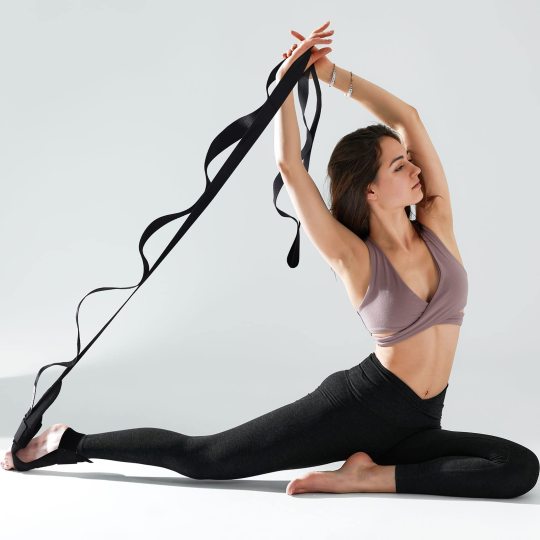
1. Children & Teens
Why: Improve flexibility during growth, support coordination, and prevent injury in sports.
Focus Areas:
Dynamic stretches before play/sports
Fun, short routines (5–10 mins)
Examples:
Arm circles
Toe touches
Side stretches
Cat-cow pose
✅ Keep it playful and engaging — use music or games!
2. Office Workers / Desk Jobs
Why: Combat stiffness, poor posture, and back/neck pain from sitting long hours.
Focus Areas:
Neck, shoulders, lower back, hips, wrists
Examples:
Seated spinal twist
Shoulder rolls
Neck tilts
Standing hip flexor stretch
Wrist circles
✅ Do 5-minute stretch breaks every hour.
3. Seniors / Older Adults
Why: Maintain mobility, reduce joint stiffness, prevent falls.
Focus Areas:
Gentle full-body movements
Balance + flexibility
Examples:
Chair hamstring stretch
Heel-to-toe walks
Ankle rolls
Side leg raises
Seated neck stretch
✅ Use chairs or wall for support; avoid fast or jerky motions.
4. Athletes & Active Individuals
Why: Enhance performance, prevent injuries, support recovery.
Focus Areas:
Sport-specific muscles
Pre-workout: dynamic
Post-workout: static
Examples:
Walking lunges (warm-up)
Hamstring stretches
Quad pulls
Pigeon pose (for runners)
Foam rolling
✅ Dynamic before workouts, static after.
5. Pregnant Women (Prenatal Stretching)
Why: Relieve lower back pain, improve posture, reduce stress.
Focus Areas:
Hips, back, legs, pelvic floor
Balance and breathwork
Examples:
Cat-cow pose
Butterfly stretch
Side-lying leg lifts
Wall-supported chest stretch
✅ Always consult a doctor first. Avoid lying flat on the back after the first trimester.
6. People with Injuries or Chronic Pain
Why: Rehab, reduce pain, regain range of motion.
Focus Areas:
Affected area (with care)
Supportive muscle groups
Examples:
Gentle neck stretches (for whiplash)
Sciatica-safe hamstring stretches
Shoulder pendulum swings
Isometric holds
✅ Work with a physiotherapist. Avoid overstretching.
7. Yoga & Mindfulness Practitioners
Why: Deepen mind-body connection, increase flexibility, release tension.
Focus Areas:
Full-body stretches
Deep, slow breathing
Examples:
Forward fold
Child’s pose
Cobra stretch
Reclining spinal twist
✅ Stretch with awareness — combine movement and breath.
0 notes
Text
Stretching Routines by Body Area
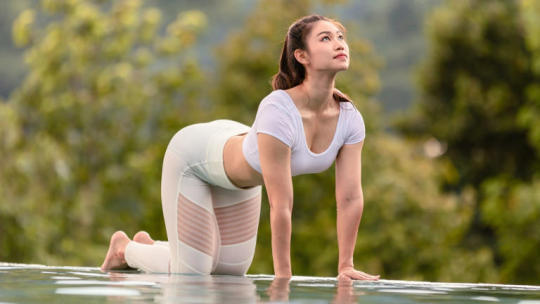
1. Neck & Shoulders
Neck Rolls
Stand upright with your feet shoulder-width apart.
Slowly drop your chin toward your chest.
Gently roll your head in a circular motion (clockwise) for about 5–7 seconds.
Pause, then repeat counterclockwise.
Do 3 rounds each direction.
Shoulder Stretch
Extend one arm across your chest.
Use the opposite hand to gently pull the arm closer to your body.
Hold for 20–30 seconds.
Repeat on the other side.
2. Arms & Upper Back
Triceps Stretch
Raise one arm overhead, bend the elbow so your hand drops behind your neck.
Use the other hand to gently push the elbow downward.
Hold for 15–20 seconds.
Switch arms.
Wall Angels
Stand with your back flat against a wall, feet shoulder-width apart.
Raise your arms in a "W" shape with elbows bent.
Slowly move your arms up to a "Y" shape and back down.
Do 10 repetitions. Great for posture and shoulder mobility.
3. Core & Lower Back
Knee-to-Chest Stretch
Lie on your back with both knees bent.
Pull one knee toward your chest while keeping the other foot on the ground.
Hold for 30 seconds.
Switch sides.
Lower Trunk Rotation
Lie on your back, knees bent and feet flat.
Gently rotate both knees to one side while keeping shoulders flat on the ground.
Hold for 30 seconds, then rotate to the other side.
Repeat 3 times each side.
4. Hips & Glutes
Hip Flexor Stretch (Lunge Stretch)
Kneel on your right knee, left foot in front forming a 90-degree angle.
Push your hips forward slowly, keeping your chest upright.
Hold for 30–45 seconds.
Switch legs.
Figure Four Stretch
Lie on your back with knees bent.
Cross your left ankle over your right knee.
Grab your right thigh and gently pull it toward your chest.
Feel the stretch in your glutes.
Hold for 30 seconds, then switch.
5. Legs: Quads, Hamstrings, Calves
Standing Hamstring Stretch
Place one heel on a low surface in front of you, leg straight.
Keep your back straight and gently lean forward at the hips.
Hold for 30 seconds.
Switch sides.
Calf Stretch (Wall Method)
Stand facing a wall with both hands placed against it.
Step one foot back and press the heel down.
Bend the front knee until you feel the stretch in the back leg’s calf.
Hold for 30 seconds.
Switch legs.
6. Ankles & Feet
Ankle Rolls
Sit or stand with one foot lifted slightly off the ground.
Rotate the ankle clockwise 10 times, then counterclockwise 10 times.
Repeat with the other foot.
Toe Flex and Point
Extend one leg while seated.
Point your toes forward, then flex them back toward you.
Repeat 10 times on each foot.
Bonus: Daily Full-Body Stretch Routine (10–12 Minutes)
You can use this short sequence daily:
Neck Rolls – 1 min
Shoulder Stretch – 1 min
Triceps Stretch – 1 min
Wall Angels – 2 mins
Knee-to-Chest – 1 min
Hip Flexor Stretch – 1 min
Hamstring Stretch – 1 min
Calf Stretch – 1 min
Ankle & Toe Stretches – 1 min
0 notes
Text
Types of Stretching for Different Fitness Goals
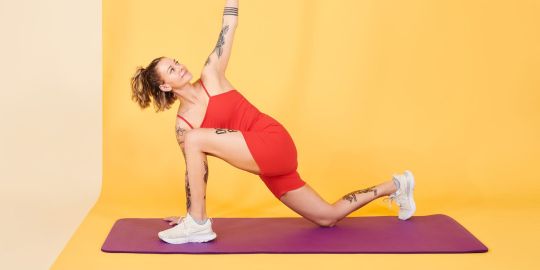
Stretching isn’t one-size-fits-all. Whether you're an athlete, a beginner, or someone just trying to stay active, different types of stretching can support different goals — from injury prevention to improved performance and recovery.
Let’s break down the main types of stretching and see which ones suit your fitness goals best.
1. Static Stretching
What it is: Holding a stretch in one position for 15–60 seconds without movement.
Best For:
Post-workout recovery
Improving flexibility
Reducing muscle tightness
Examples:
Touching your toes while seated
Standing quad stretch
Overhead triceps stretch
Goal it supports: ✅ Cool down and increase long-term flexibility
2. Dynamic Stretching
What it is: Stretching through controlled movements that mimic exercises or sports.
Best For:
Pre-workout warm-ups
Enhancing range of motion
Activating muscles
Examples:
Arm circles
Walking lunges
Leg swings
Torso twists
Goal it supports: ✅ Improved performance, reduced risk of injury before exercise
3. Ballistic Stretching
What it is: Using momentum or bouncing movements to force a stretch beyond its normal range.
Best For:
Advanced athletes
Martial arts or gymnastics (under supervision only)
Examples:
Bouncing down to touch toes
Quick high kicks
Goal it supports: ✅ Rapid flexibility gains (but high risk — not recommended for beginners)
Caution: This type can cause injury if done incorrectly. Avoid unless trained.
4. PNF Stretching (Proprioceptive Neuromuscular Facilitation)
What it is: A method combining passive stretching and isometric contractions of the muscle.
Best For:
Advanced flexibility training
Physical therapy
Athletic rehab
Examples:
Hamstring PNF stretch (push and relax method)
Goal it supports: ✅ Deep flexibility gains in a short time
5. Active Stretching
What it is: Stretching a muscle by actively contracting the opposite muscle group.
Best For:
Strengthening flexibility
Yoga and pilates practice
Examples:
Holding your leg up high without support
Arm stretches using only your body
Goal it supports: ✅ Building control and strength in extended positions
6. Passive (or Relaxed) Stretching
What it is: Stretching with the help of external assistance like a strap, wall, or partner.
Best For:
Relaxation
Massage therapy and cool-downs
Examples:
Using a towel to stretch your hamstrings
Partner-assisted quad stretch
Goal it supports: ✅ Easing tight muscles and improving flexibility without active effort
How to Choose the Right Type for Your Goal
Fitness Goal Recommended Stretching Type Warm-up before workout Dynamic Stretching Cool-down after workout Static or Passive Stretching Improve flexibility Static, PNF, or Active Stretching Advanced athletic training Ballistic or PNF Stretching Injury rehab or therapy PNF or Passive Stretching
Conclusion
Stretching is more than just touching your toes. Choosing the right type of stretching for your fitness goal can enhance your results, prevent injuries, and support long-term health. Whether you want to warm up, recover, or grow more flexible — there’s a stretch for that!
0 notes
Text
Why Stretching Matters: The Hidden Key to a Healthier Body
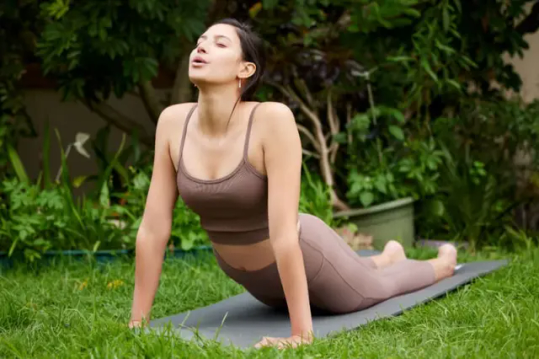
Why Stretching Matters: The Hidden Key to a Healthier Body
In the world of fitness, we often focus on cardio, strength training, or high-intensity workouts. But there's one powerful practice that quietly supports it all: stretching. Though it might seem simple, stretching is essential for maintaining overall physical health, improving performance, and preventing injuries.
1. Enhances Flexibility and Mobility
Stretching helps lengthen tight muscles and improve your range of motion. This flexibility makes everyday movements—like bending, walking, or lifting—easier and smoother. Over time, better flexibility leads to improved posture and less physical strain.
2. Reduces Risk of Injury
When your muscles are tight or stiff, they’re more prone to strains or tears during sudden movements. Regular stretching prepares your body for physical activity by loosening up muscles and joints, making injuries less likely.
3. Improves Blood Flow and Circulation
Stretching increases blood flow to the muscles, which helps deliver oxygen and nutrients more effectively. This improved circulation promotes faster recovery, reduces muscle soreness, and enhances your energy levels.
4. Relieves Stress and Tension
Both physical and emotional stress can cause muscles to tighten. Gentle stretching acts as a natural stress reliever, calming your body and mind. It promotes relaxation, lowers tension, and helps you breathe more deeply and mindfully.
5. Supports Better Posture
Sitting for long periods, especially at a desk, leads to muscle imbalances and poor posture. Stretching the chest, back, and hips helps correct alignment, allowing you to stand and sit more upright with less discomfort.
6. Boosts Workout Performance
Stretching before a workout (especially dynamic stretching) helps activate key muscle groups, improving balance, coordination, and control. Post-workout stretching (static) supports recovery and reduces tightness.
How to Get Started
You don’t need to stretch for hours. Just 5–10 minutes a day can make a real difference. Here are a few tips:
Stretch when your body is warm (after a light walk or workout).
Hold each stretch for 15–30 seconds without bouncing.
Breathe slowly and relax into the stretch.
Focus on major areas: neck, shoulders, back, hips, hamstrings, calves.
Conclusion:
A Small Habit, Big Impact
Stretching is one of the easiest, most overlooked habits that can transform your body over time. It keeps you mobile, reduces pain, boosts performance, and improves overall well-being. So next time you lace up your shoes or finish a workout, don’t skip the stretch — your body will thank you.
0 notes
Text
The Ultimate Guide to Stretching for Fitness and Flexibility
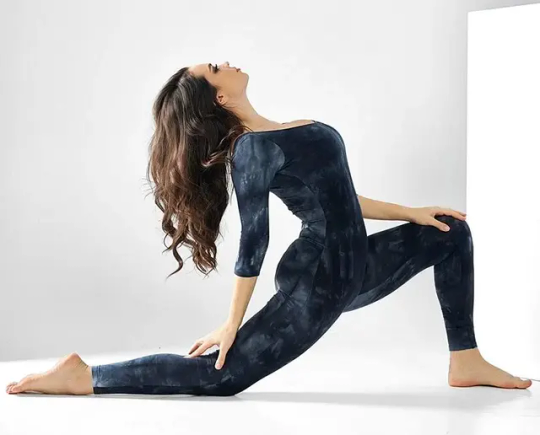
When it comes to a healthy lifestyle, it's not just about workouts and diet — stretching is a key element that many people overlook. Whether you're an athlete, a casual gym-goer, or someone who just wants to stay active, stretching helps your body stay flexible, pain-free, and strong.
What is Stretching?
Stretching is the act of gently lengthening your muscles to improve flexibility and mobility. It increases blood flow, reduces stiffness, and prepares your body for movement.
Benefits of Stretching
Increases flexibility and range of motion
Reduces muscle tension and soreness
Enhances physical performance
Improves posture and balance
Helps prevent injuries
Promotes relaxation and better sleep
Types of Stretching
Static Stretching Holding a stretch in one position for a few seconds (like touching your toes). Best done after workouts.
Dynamic Stretching Stretching with movement (e.g., arm swings, leg kicks). Ideal before workouts to warm up the body.
Ballistic Stretching Bouncing or jerky movements to push your body beyond its normal range — should only be done by trained individuals.
PNF Stretching (Proprioceptive Neuromuscular Facilitation) A mix of stretching and contracting muscles — often used in physical therapy to increase flexibility fast.
When Should You Stretch?
Before exercise → Do dynamic stretching to loosen up.
After exercise → Use static stretching to cool down and relax your muscles.
Daily routine → Even 5–10 minutes a day can make a big difference.
Safety Tips for Stretching
Never bounce or overstretch.
Breathe deeply and stay relaxed.
Stop immediately if you feel pain.
Be consistent, not aggressive.
Simple Daily Stretches to Try
Neck rolls
Shoulder circles
Hamstring stretch
Calf stretch
Spinal twist
Child’s pose (great for back)
Conclusion
Stretching is not just for athletes — it’s for everyone. Making it a part of your daily life can help you move better, feel better, and stay injury-free. It’s a small investment in your body with big long-term rewards.
1 note
·
View note